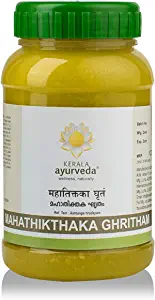Many academics believe that Ayurveda is the earliest kind of medicine. Ayurveda translates as “The Science of Life” in Sanskrit. The “Mother of All Healing,” as Ayurvedic knowledge is frequently referred to, has its roots in India and dates back more than 5,000 years. It comes from the ancient Vedic culture and has been passed down orally from great masters to their students for many, many years. A little portion of this knowledge has been preserved in writing, but the majority is unavailable. Ayurveda has its roots in many of the natural treatment techniques that are presently popular in the West, including Homeopathy and Polarity Therapy.

Ayurveda emphasizes prevention and promotes health maintenance by emphasizing balance in one’s life, proper thinking, healthy food, an active lifestyle, and the use of medicines. One can develop this balance of body, mind, and consciousness according to their unique constitution by knowing Ayurveda. They can also adjust their lifestyle to achieve and maintain this balance. Every person has a distinct pattern of energy, which is made up of their unique blend of physical, mental, and emotional traits, much like everyone has a different fingerprint. This constitution is established at conception by a variety of variables and is constant throughout an individual’s lifetime.
This balance is disturbed by a variety of internal and external influences, which are represented in a shift in one’s constitution away from the balanced condition. One’s emotional state, diet, food preferences, the seasons and weather, physical trauma, employment, and family ties are a few examples of these emotional and physical pressures. Once these elements are recognized, one can take the necessary steps to counteract or lessen their impacts, remove the source of the imbalance, and restore their original constitution. While imbalance is disorder, balance is the natural order. The disorder is a sickness; health is order. Order and disorder are constantly interacting with one another inside the body. One can restore order when they are aware of the nature and structure of disorder.
Balancing the Three Principle Energies of the Body
According to Ayurveda, there are three fundamental categories of energy or functional principles that exist in everything and everyone. We utilize the original Sanskrit words vata, pitta, and Kapha since there isn’t a single phrase in English that adequately expresses these ideas. These ideas can be connected to a person’s body’s fundamental biochemistry. The movement must be created for fluids and nutrients to reach the cells and allow the body to operate. Energy is also needed to lubricate and maintain the structure of the cell as well as to digest the substances inside the cells. The energies of movement are known as Vata, digestion or metabolism as pitta, and lubrication and structure as Kapha.
All humans possess Vata, pitta, and Kapha traits; however, one is typically primary, one secondary, and the third is typically least noticeable. According to Ayurveda, sickness is brought on by improper cellular function brought on by an excess or shortage of Vata, pitta, or Kapha. Toxins themselves can potentially result in disease. Body, mind, and consciousness all work together to maintain balance in Ayurveda. They are merely seen as various aspects of one’s personality. Understanding the interaction between Vata, pitta, and Kapha is essential to learning how to balance the body, mind, and consciousness.
According to Ayurvedic philosophy, the five major elements of space, air, fire, water, and earth interact to create the entire cosmos. These five elements can be combined and permuted to create the Vata, pitta, and Kapha patterns that can be found throughout creation. Vata is the subtle energy of movement in the physical body, pitta is the energy of digestion and metabolism, and Kapha is the energy that creates the structure of the body. Vata, which is made up of Space and Air, is the subtle energy connected to movement. It controls all motions in the cytoplasm and cell membranes, as well as breathing, blinking, muscle and tissue motion, and heartbeat. Vata encourages flexibility and inventiveness when it is in balance.
Vata causes worry and anxiety when it is out of equilibrium. Pitta is the body’s metabolic system, which is composed of Fire and Water. It controls nutrition, metabolism, assimilation, digestion, and body temperature. Pitta encourages comprehension and intelligence when it is in equilibrium. Pitta, when out of balance, causes rage, wrath, and jealousy. The “glue” that keeps the cells together is provided by the energy known as kapha, which is made of Earth and Water and forms the structure of the body (bones, muscles, tendons). For all the systems and portions of the body, kapha provides the water. It keeps immunity strong, hydrates the skin, and lubricates joints. Kapha is characterized by love, peace, and forgiving when it is in balance.
It causes attachment, avarice, and envy when out of balance. We face various obstacles and possibilities in life. We do have some control over some things, such as our nutrition and way of life, despite the fact that there are many factors over which we have little influence. It’s critical to pay attention to these choices to maintain equilibrium and wellness. Body, mind, and consciousness are strengthened by following a diet and lifestyle that are suitable for each individual’s constitution.
Difference Between Ayurvedic and Western Systems
It’s crucial to comprehend the fundamental differences between Ayurveda and Western allopathic medicine. To get rid of infections or sick tissue, western allopathic medicine typically uses medications and surgery and tends to concentrate on symptomatology and disease. This strategy has saved a lot of lives. In actuality, Ayurveda covers surgery. Drugs, however, frequently make the body weaker because of their toxicity. The disease is not the main concern of Ayurveda. Ayurveda contends that energy must be in harmony in order for all life to exist. The body’s natural defence mechanisms will be powerful and better able to fend off disease when there is little stress and a person’s internal energy flow is regulated.
Ayurveda is not a replacement for Western allopathic medicine, it must be noted. Many times, medication or surgery is the most effective way to address acute symptoms and disease processes. Ayurveda can be used in conjunction with Western medicine to strengthen a person and reduce their risk of contracting an illness, as well as to rebuild their bodies after undergoing medical procedures or medication. Everybody has periods when they feel unwell and realize they are out of balance. When we visit the doctor, there may occasionally be no problem. What is happening is that this imbalance has not yet been identified as an illness.
However, it is significant enough for us to be aware of our suffering. We might start to question whether it’s all in our heads. We might also start to think about other options and actively work to bring our body, mind, and consciousness into harmony.
Evaluation and Treatment of Imbalances
Ayurveda includes several methods for evaluating health. In particular, the practitioner considers the source and genesis of an imbalance concerning the main indications and symptoms of sickness. The patient’s suitability for various treatments is another factor they take into account. Through direct questions, observation, a physical examination, and inference, the practitioner makes a diagnosis. During an evaluation, simple procedures including taking the pulse, examining the tongue, eyes, and physical shape, as well as paying attention to the voice tone, are used. When necessary, palliative and cleaning procedures can be utilized to aid in the eradication of an imbalance, coupled with recommendations for eradicating or controlling the causes of the imbalance.
The implementation of lifestyle modifications, beginning and adhering to a recommended diet, and using herbs are a few examples of recommendations. In some instances, taking part in a detoxification program called panchakarma is advised to help the body get rid of toxins that have built up so that the different proposed measures of therapy can be more effective. In conclusion, Ayurveda addresses the body, mind, and spirit in all facets of life.
It acknowledges that each of us is distinct, that each of us reacts to life’s various facets uniquely, and that each of us has individual strengths and limitations. Ayurveda provides a tremendous amount of knowledge on the connections between causes and their effects, both overt and covert, for each unique individual through insight, understanding, and experience.
Where To Start? Kerala Ayurveda!
The History of Kerela Ayurveda
When a doctor from the Sindh area came to Kerala in quest of natural herbs and trees since Kerala had an abundance of such medicinal flora, Ayurveda was first associated with Kerala. He developed a medical system that was embraced by Kerala’s doctors and healers, who became known as Ashtvaidyas because they were experts in the eight branches of Ayurveda. Between the 13th and the 17th centuries, when they also benefited from the sponsorship of successive kings, the Ashtvaidya medical culture developed.
It took a lot of time and effort for the disciples to fully understand the complexities of the eight branches of Ayurveda, therefore learning them was a challenging endeavor. Sanskrit, poetry, grammar, and theatre understanding were all required to comprehend the subject’s complexities. The disciples would become accomplished Ashtvaidyas only after this demanding instruction. Kerala, with its rich cultural heritage, has served as Ayurveda’s model.

Kerala Ayurveda Go Easy Herbal Capsules
A tried-and-true unique natural herbal formula created to help a healthy and simple bowel movement. This natural recipe, which was created using Senna, Triphala, and Castor, typically aids in supporting the body’s natural elimination function. It calms the digestive system and aids in a regular, painless evacuation naturally.
It is made with natural laxatives and naturally facilitates effortless egress.
It promotes good digestion and eases the gastrointestinal tract.

Kerala Ayurveda Mahathikthaka Ghritham
Skin conditions can appear out of nowhere. You discover sores on your skin as you awaken one morning. You ponder what you consumed or did the night before that caused this. Panic sets in before you have time to understand what just transpired.
Not to worry. One click will bring you to the answer.
Mahathikthaka Ghritham, an Ayurvedic remedy, is used to treat dermatitis and other skin-related conditions. Mahathikthaka Ghritham’s herbal components encourage cell regeneration to cure dry, flaky skin and lessen irritation. You can use this Ayurvedic medication to treat boils.
Conclusion
Many individuals from all backgrounds who were thought to be incurable by Western medical professionals have been treated by ayurvedic physicians. Due to its straightforward, low-cost, and very successful therapies, ancient Indian medicine is now well-known throughout the world. Being a holistic and comprehensive system of health and wellbeing, Ayurveda has discovered thorough treatments for a number of ailments like Asthma, Liver Cirrhosis, Hair Loss, and Aging for which allopathic medicines have yet to find a solution.
The benefits of Ayurveda over Western modern medicine are numerous.




